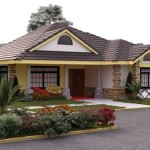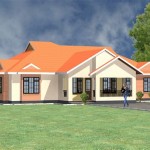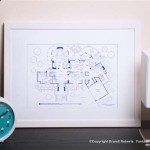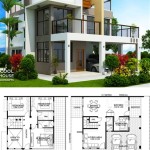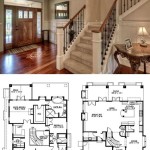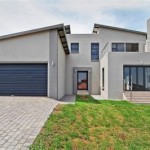Essential Aspects of Single House Floor Plan Design
Designing a single house floor plan is a complex task that requires careful consideration of various factors to create a functional, comfortable, and aesthetically pleasing living space. Here are some essential aspects to consider when designing a single house floor plan:
1. Functional Layout
A well-designed floor plan should prioritize functionality and ease of movement. The rooms should be arranged in a logical flow, with clear connections between spaces. Consider the frequency and purpose of each room to determine its proximity to other areas. For example, the kitchen should be easily accessible from the dining and living rooms, while bedrooms should be located in quieter areas.
2. Room Sizes and Proportions
The size and proportions of each room should be determined by its intended use. Living spaces, such as the living room and family room, typically require more space for furniture and activities, while bedrooms can be more compact. Consider the number of occupants, furniture requirements, and desired level of comfort when determining room sizes.
3. Natural Lighting and Ventilation
Natural lighting and ventilation are essential for both comfort and well-being. Incorporate large windows and skylights to maximize natural light and create a bright and airy ambiance. Consider cross-ventilation by placing windows and doors on opposite sides of the rooms to allow for air circulation.
4. Privacy and Security
Privacy and security are important considerations, especially in bedrooms and bathrooms. Position rooms thoughtfully to ensure privacy from public areas and from each other. Consider the placement of windows and doors to minimize visibility from outside and enhance security.
5. Storage and Organization
Adequate storage solutions are crucial for maintaining a clutter-free and organized home. Incorporate built-in closets, shelves, and drawers throughout the house to accommodate various storage needs. Consider the placement of storage spaces based on the frequency of use, with essential items being easily accessible.
6. Outdoor Integration
Blurring the lines between indoor and outdoor spaces can enhance the overall livability of the house. Incorporate patios, decks, or balconies that extend the living areas outdoors. This can provide additional space for entertaining, relaxation, or simply enjoying the outdoors.
7. Energy Efficiency
Consider energy efficiency when designing the floor plan. Factors such as window orientation, insulation, and the use of passive solar design principles can significantly impact a home's energy consumption. Optimize the layout to take advantage of natural resources and reduce the need for artificial lighting and heating.
8. Aesthetic Appeal
While functionality is paramount, the aesthetic appeal of the floor plan is also important. Strive for a balance between form and function by incorporating architectural details, textures, and finishes that enhance the overall ambiance of the home. Consider the desired style and create a cohesive design throughout the house.

Small House Design Shd 2024007 Pinoy Eplans One Y Bungalow Plans Floor

Amazing Three Bedroom One Y House Designs Pick Your Bet Ulric Home Construction Plan Beautiful Plans
Simple One Story Design Builder

Small House Design 2024001 Pinoy Eplans Floor Plans

Low Budget Simple House Design Plans For Builders Blog Builderhouseplans Com

Stylish One Story House Plans Blog Eplans Com

Single Y House Design The Metro Smart Practical And Modern Almost Like Perfect M Layout Plans One Floor

Low Budget Simple House Design Plans For Builders Blog Builderhouseplans Com

Simple Tiny House Layout

Stylish One Story House Plans Blog Eplans Com

